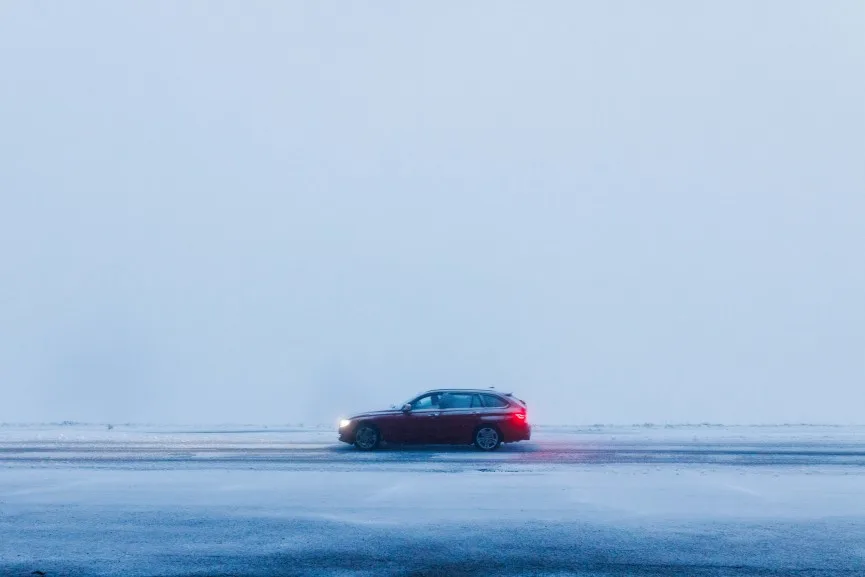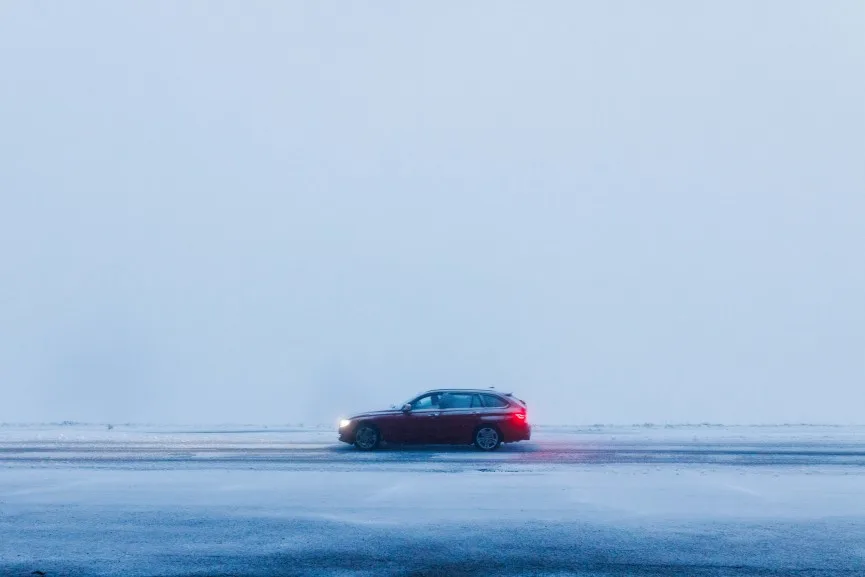
Be gentle: Winter driving tips from a world rally champion
Berlin (dpa) — How do you drive safely in winter when there’s snow and ice and a wrong move may see you skidding off the road? We asked a world rally champion for his tips on coping with treacherous winter conditions.
German rally driver Walter Roehrl was world champion in 1980 and 1982 so he knows what it takes to drive safely on ice and snow. First up is a winter-proofed car.
That includes winter additives to the coolant and wiper fluids, good lights, and fresh wiper blades. Winter tires with at least 4 millimetres of tread depth are essential. In mountains or very snowy regions, suitable snow chains may also be needed.
"Steering and driving manoeuvres only work if the wheels have sufficient grip," Roehrl says.

Even on freezing winter days, former world champion Walter Roehrl says he takes off his thick jacket before setting off in the car. (Credit: Timm Schamberger/dpa via Reuters)
Before you start you should clean off all the windows. "Through small peepholes, drivers can only insufficiently observe the traffic and react too slowly. That's dangerous and unnecessary," says the rally pro.
Make sure also to knock any snow off your shoes and jackets. Snow thawing inside the car will make the windows fog up.
You also shouldn’t wear a thick winter coat when driving. They can restrict movement and prevent the seat belt from sitting properly on the body.
"Thick gloves and hats have no place on the driver in the car. The steering wheel is not held in a good grip and the cap can obstruct the view," according to Roehrl.

A winter wonderland will demand the utmost concentration from drivers and an extremely adapted driving style. (Credit: Philipp von Ditfurth/dpa via Reuters)
Visit our Complete Guide to Winter 2022 for an in-depth look at the Winter Forecast, tips to plan for it and much more!
The most important thing when driving in snow and ice is to slow down. Only those who drive slowly will have enough time to react.
“If you drive too fast towards a curve, you can hardly control the car. Man and machine cannot outwit the physical limits," Roehrl says.
He also advises that you steer as little as possible and be gentle with the pedals: "On smooth and slippery surfaces, the driver who handles the accelerator, clutch, brake, and steering sensitively will drive smoothly.”
In the event of emergency braking, however, you should step on the brake pedal with full force so that the anti-lock braking system (ABS) can intervene as quickly and as efficiently as possible.
If the car skids, don’t panic. Hectic steering and braking will only make the situation worse. Instead you need to take your foot off the gas and brake gently.
Thanks to ABS, the car can usually still be steered. It’s important that the tires are pointing in the direction that you want the car to go.
"If drivers can counter-steer, then please do so a little, usually a quarter turn of the steering wheel is enough for the car to go back to where it is supposed to go," Roehrl says.
Practice makes perfect. If you've never taken a car to its physical limits, you should try it out at a driving safety training course.
There you will learn how a vehicle behaves in slippery conditions and how to respond correctly in borderline situations.
Driving in winter conditions demands full concentration from the driver. That includes thinking ahead. For example, you can get crosswinds on a bridge, ice in a wooded area, sudden snow when the trees end.
“Your thoughts have to be on the car while driving and nowhere else," is Roehrl’s advice.
Snow doesn't necessarily have to be slippery. Cold, packed snow can still provide sufficient grip and thus good drivability.
Slushy snow is more slippery and when there’s black ice, even a rally professional won’t drive. Better in that case to wait until the ice has thawed or snowfall has made the slippery surface passable again.
Reporting by: Fabian Hoberg for dpa via Reuters Editing by: Coman Hamilton, dpa/tmn